Philodendron Splendid is a Philodendron verrucosum x melanochrysum hybrid crossed by supposedly Keith Henderson. This climbing evergreen plant has a bit elongated heart-shaped, velvety dark green leaves with light green veins and a maroon-tinged underside.
What are the care needs and growth requirements (temperature, humidity, light, watering, soil, fertilizer, etc.)? Does it have any specific problems like pests, diseases, root rot, or leaf discoloration?
Get answers to all these questions. We also have a comparison with its parents, Philodendron micans and gloriosum. You will also learn prices and where to buy Philodendron Splendid, including at Etsy.com and eBay.
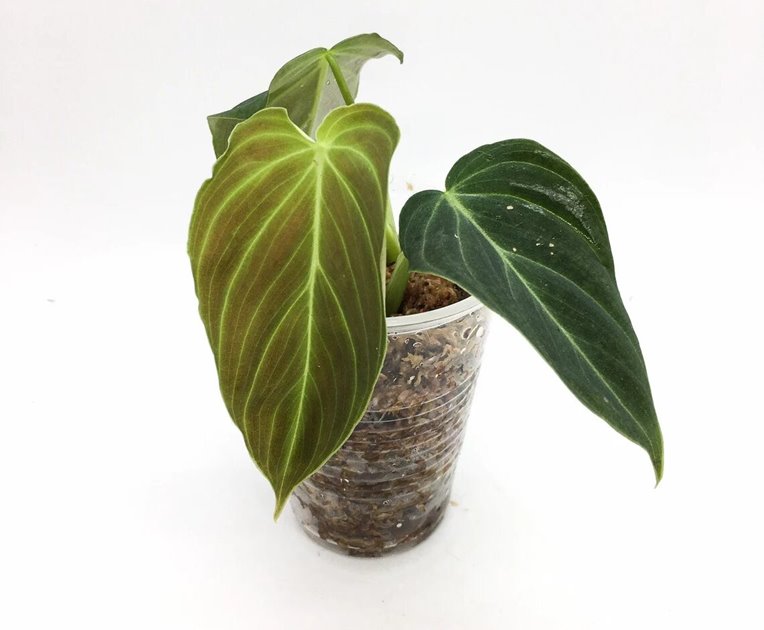
Contents
- Quick overview
- About Philodendron melanochrysum
- About Philodendron verrucosum
- Philodendron Splendid
- Similar plants
- 1. Philodendron splendid vs. verrucosum
- 2. Philodendron splendid vs. melanochrysum
- 3. Philodendron splendid vs. gloriosum
- 4. Philodendron splendid vs. micans
- Philodendron splendid care
- 1. USDA hardiness zone:
- 2. Temperature
- 3. Humidity
- 4. Light needs
- 5. Soil
- 6. Watering
- 7. Fertilizer
- 8. Pruning
- 9. Repotting
- 10. Staking
- Philodendron Splendid propagation
- Problems or issues
- Where to buy Philodendron Splendid
- Frequently asked questions (FAQs)
Quick overview
- Name: Philodendron “Splendid” (Philodendron verrucosum x melanochrysum)
- Common name: Splendid Philodendron
- Family: Araceae
- Toxicity: All plant parts are toxic to cats, dogs, and humans since they contain insoluble calcium oxalates. If you chew the plant, these sharp or needle-like crystals will cause severe oral irritation and a burning sensation. Also, your lips, tongue, or mouth may turn red or swell. More symptoms include swallowing difficulties, drooling, loss of appetite, etc.
- Care level: Easy or low
About Philodendron melanochrysum
Philodendron melanochrysum (black gold Philodendron) is an adorable climbing houseplant native to Colombia. But botanists have also made collections in Ecuador, Costa Rica, and Peru.
It has elongated (up to 3 feet long or more), heart-shaped (or arrow-shaped), and velvety dark green to nearly black leaves with pale green veins. But as they emerge, new leaves are bronze-toned or may be salmon-red, orange-brown, or copper-red.
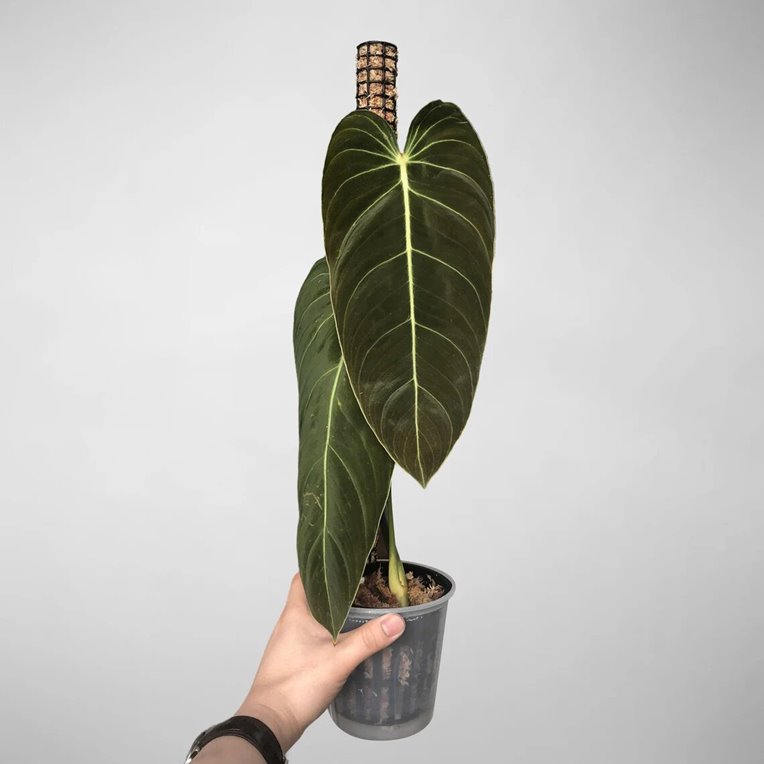
When viewed in the sun, these leaves appear to have tiny golden speckles, and their erect petioles have slight parallel grooves towards the apex.
About Philodendron verrucosum
Philodendron verrucosum is an appressed climbing houseplant native to Costa Rica to Peru.
It is a fast-growing plant with broadly oval, heart-shaped, velvety dark green to dark emerald leaves with paler (golden, light-green, or silvery) veins and a reddish-purple underside. But emerging leaves are blackish-green or bronze-green.

The leaves may grow up to 2.5 feet long, and the petiole, mostly purplish violet to brownish, are hairy.
Lastly, since P. verrucosum is highly variable, its appearance, including leaves, may vary slightly. Its varieties include Mini (Dwarf), Rojo, Sunset, Red Back, and El Choco Red.
Philodendron Splendid
This Philodendron melanochrysum x verrucosum hybrid borrows its appearance and features from the two parents. It is a fast-growing houseplant that can grow up to 10 feet or more if given space. But indoors, it will hardly go beyond 6 to 8 feet. Also, it needs a climbing place.
What about its leaves? Philodendron Splendid has larger (up to two feet or more) triangular, slightly elongated, heart-shaped, velvety dark green leaves with conspicuous light green veins and a maroon-tinged underside. But as they emerge, new leaves may have a bronze tinge.
Lastly, its petiole is firm, warty, and has a reddish or marron tinge toward the apex.
Similar plants
People confuse Philodendron splendid with its parent and other species. How do you identify it, or what are its differences from other species?
1. Philodendron splendid vs. verrucosum
These plants resemble each other in many ways, including a reddish-tinged underside, velvety texture, pale veins, and leaf shape. But Philodendron verrucosum leaves are broadly oval with more conspicuous venation. Also, they are less dark and sometimes dark emerald, and their petiole is hairy on at least one side.
On the other hand, Philodendron splendid’s leaves are triangular, more elongated, and darker. Also, their paler veins are not as conspicuous, and the petioles are warty, i.e., not as hairy. But depending on the variety, leaf size, shape, and appearance may look different.
2. Philodendron splendid vs. melanochrysum
These two aroids have heart-shaped, velvety dark green leaves with paler veins. But you quickly tell the difference.
P. melanochrysum has much narrower and elongated, darker to almost black leaves with golden speckled (if you view them under sunlight). Also, their petioles are not warty, and the paler veins are less not as conspicuous or intense.
In contrast, Philodendron splendid are triangular shaped and broader and shorter. Also, they are not as dark and don’t have the gold specks, and their petiole is warty.
3. Philodendron splendid vs. gloriosum
It shouldn’t be difficult to tell the difference between these two plants even by considering growing habits or appearance.
Philodendron gloriosum is a ground or terrestrial creeper with velvety deep green heart-shaped leaves and whitish (at times pale green or pinkish) veins. New leaves chartreuse with veins and margin pinkish, and the underside is paler, while the petiole is green with a pinkish tinged towards the apex.
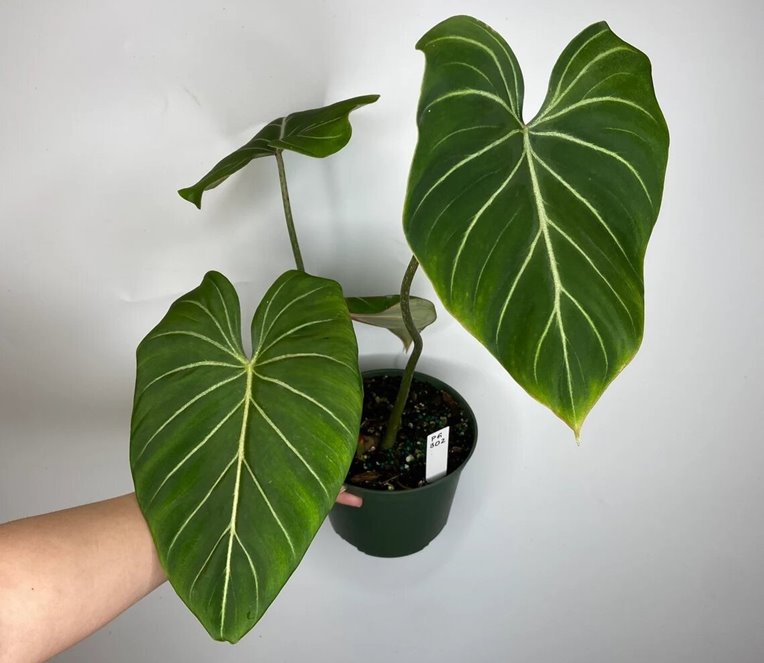
On the contrary, Philodendron splendid is a climbing plant with velvety leaves. But they are darker, triangular, and a bit elongated. Also, their veins are light green and not as whitish, and their petiole are warty with a maroon tinged towards the upper side. Also, when they emerge, they may have a bronze tinge.
4. Philodendron splendid vs. micans
Philodendron micans or Velvet leaf Philodendron, officially known as Philodendron hederaceum var. hederaceum, is a vining plant whose juvenile form is a popular houseplant. It has dark green, velvety, emerald, bronze, or green-purple heart-shaped leaves with a reddish-purple underside.
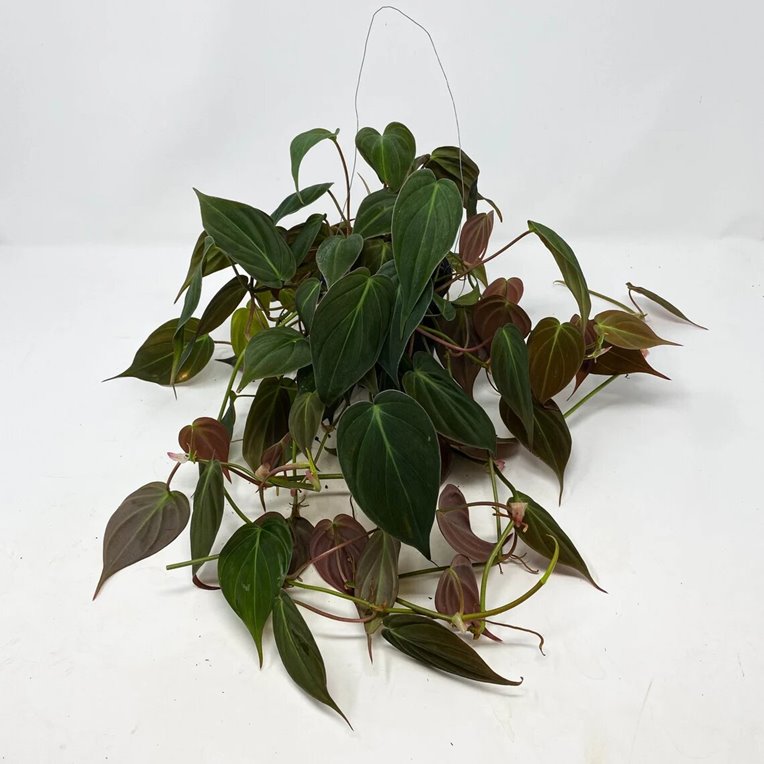
Compared to Philodendron splendid, the leaves are smaller (3-6 inches), not triangular, and don’t have the conspicuously pale veins.
Philodendron splendid care
Philodendron splendid requires a warm (65-85°F), humid (50% or higher) place with bright, indirect light. Grow it in a well-drained, airy potting mix and feed it with a balanced, liquid houseplant fertilizer once a month.
Water it when the top few inches of the potting mix feel dry, and don’t forget to stake, prune or repot it (after every 2-3 years).
1. USDA hardiness zone:
Philodendron Splendid USDA hardiness zone is 10-11. It is not frost-hard, and freezing temperatures will damage your plant. Only grow it outdoor if you are in these zones.
2. Temperature
The ideal temperature is 65 to 58 degrees Fahrenheit (18-29°C). Avoid temperatures below 55F (12.8°C) and sudden dips or spikes as they will stress your plant. Also, don’t place your plant near a heat source or vent or cold drafts.
Heat stress may make your plant droop or wilt or cause leaf scorch, curling, etc. Meanwhile, cold drafts may cause overnight browning. Also, these two may cause yellowing of leaves, among other issues.
3. Humidity
Like its parents, P. Splendid loves humidity. So, maintain it at 50% or more. But it can still survive in slightly lower humidity.
Very low humidity will make leaves curl, have brown tips and edges, turn yellow, etc. So, we recommend you mist your plant, have a pebble tray, or move them to a more humid place like the bathroom or kitchen if they are well lit.
Grouping several of your plants may help raise humidity by creating a microclimate. But if you want to control humidity, get a humidifier.
A good brand of a humidifier is AquaOasis™ Cool Mist Humidifier. It is affordable, not noisy and runs for up to 24 hours.
4. Light needs
Philodendron Splendid needs bright, indirect light but can still tolerate medium indirect light.
Too little light will slow growth, a leggy plant, and smaller paler leaves than usual.
Lastly, avoid direct sun as it will burn leaves and make them look bleached or washed out. The window you have doesn’t matter. Just ensure you put your plant in a bright spot where the direct sun doesn’t reach, except for the early morning sun on the east-facing window.
5. Soil
The best soil for your Philodendron Splendid should be well-drained, aerated, and rich in organic matter. These plants are not so fussy and won’t mind even sphagnum moss alone.
Buy aroid mixes see Etsy.com. Alternatively, you can make yours. Add perlite, peat moss, bark chips, and compost to your potting mix. Exact ratios don’t matter but ensure it holds moisture without being soggy.
6. Watering
Proper watering is one area you can’t afford to go wrong. Too much will cause root rot, while too little may affect growth, cause leaf scorch, drooping, wilting, etc.
We recommend watering your Philodendron Splendid when the potting mix’s top 2-3 inches feels or up to the first knuckle of your finger. It may be after four days to a week in the growing month and biweekly in the non-growing season. But don’t follow a routine since water needs changes with the season, conditions (temperature, humidity, light), soil, plant size, pot size or size, etc.
If you don’t touch the soil, buy a soil moisture meter like XLUX, amazon’s best-seller, is an excellent choice, and water your plant when the reading is three or less.
When watering your plant, saturate the potting mix until excess water flows from drainage holes. Then discard any water that collects after 15-20 minutes.
7. Fertilizer
Besides having a potting mix rich in organic matter, you should only feed these plants once a month in the growing seasons. Use a balanced like N-P-K, 10-10-10 or 20-20-20, liquid houseplant fertilizer at half recommended strengths. Even Miracle-Gro Indoor Plant Food (Liquid) with N-P-K 1-1-1 is perfect, but you may have to feed more often. Why? Because of its low concentration.
However, you can also use slow-release houseplant fertilizer. Start applying in early spring and follow the manufacturer’s recommendations.
8. Pruning
This aroid doesn’t need much pruning except for cutting any dead, damaged, or diseased leaves or parts. Don’t forget to use sterilized gardening scissors. Also, remember to clean dirty or dusty leaves.
In early spring or during the growing months, you can cut back stems if you want to control the shape, size, or growth,
9. Repotting
Repot your plant after 2-3 years or when you see roots growing from drainage holes and spiraling inside the pot, i.e., when your plant is rootbound.
Go for a pot 2-3 inches wider in diameter and repot your plant during the growing months.
10. Staking
As a climbing plant, you need to get a moss pole, totem, trellis, or any other support for your plant. Then use twist ties, gardening Velcro tapes, or a soft string to train this plant on the climbing surface.
Philodendron Splendid propagation
Like its parents, the best way to propagate Philodendron Splendid is by stem cutting in water or soil. The cutting must have at least a node (the knobby part where aerial roots grow or petiole attach). You cannot use a nodeless stem or leaf with a petiole.
Besides stem cutting, you can also use air layering. It entails wrapping moist sphagnum moss on a node of targeted stems while the stem is still attached to the parent plant.
Lastly, the steps to follow are the same as any climbing Philodendron. We did go through them when looking at P. verrucosum propagation.
Problems or issues
This plant is not susceptible to any specific pests, diseases, or issues not typical of the Philodendron species. Let us have a quick overview.
- Pests: These plants may get aphids, thrips, mealybugs, spider mites, and scale insects, but they are uncommon except for the mites that may occur. Check with a 10X magnifying glass or look at their symptoms. Treat your plant with insecticidal soaps, horticultural oil sprays, or neem oil.
- Diseases: These plants are not prone to fungal or bacterial leaf spots and blights. But you must practice proper sanitation (washing hands, sterilizing gardening tools, etc.) and isolating new plants.
- Root rot: Prevalent in people fond of overwatering their plants or using soils that don’t drain (heavy or compacted like clay). To solve the issue, begin by repotting your plant. And as you do so, cut any decayed roots. Also, rectify your potting mix and water plants properly.
- Leaves are turning yellow: Overwatering is the number one cause. Others are too much or little light, low humidity, underwatering and cold drafts. Lack of nutrients may also be a cause, but it is rare.
- Leaves turning brown: Brown tips or margins are due to underwatering, low humidity, too much light, heat stress, or fertilizer burns, while brown spots indicate pests or diseases. But cold drafts, overwatering, transplant shock, etc., may cause the browning.
- Leaves curling: Your plant is trying to save water or prevent damage. Likely causes are underwatering, low humidity, heat stress, and too much light. Also, anything that hampers water absorption, including root rot, or causes moisture loss from leaves may be a cause.
- Drooping and wilting: Occurs when cells don’t have enough water to remain turgid. Causes are similar to those of leaves curling.
Where to buy Philodendron Splendid
If you need to buy Philodendron, start with Etsy.com and then eBay. These marketplaces have vendors from the US, UK, Canada, Australia, and other parts of the world. But Etsy has a more extensive inventory.
Secondly, go to Facebook and Instagram. These two social media platforms have vendors from all over the world too. Additionally, you can buy from the following online vendors:
- Peace Love and Happiness Club (Seattle, WA)
- Carnivero (Austin, TX)
- Canopy Plant Co. (New Orleans, LA)
- Uprooted (Australia)
- Green MY Space (Australia
Lastly, google “Philodendron Splendid for sale” to get more sellers, including those near you.
Frequently asked questions (FAQs)
Yes. Philodendron Splendid is a rare hybrid. None of the big box stores or large-scale horticultural growers have it. Also, you are unlikely to get it in your local tropical plant stores, including specialty.
The price of Philodendron Splendid ranges from $40 to $100 for a rooted or unrooted cutting to a small plant. But how much you pay depends on where you buy and other market forces.

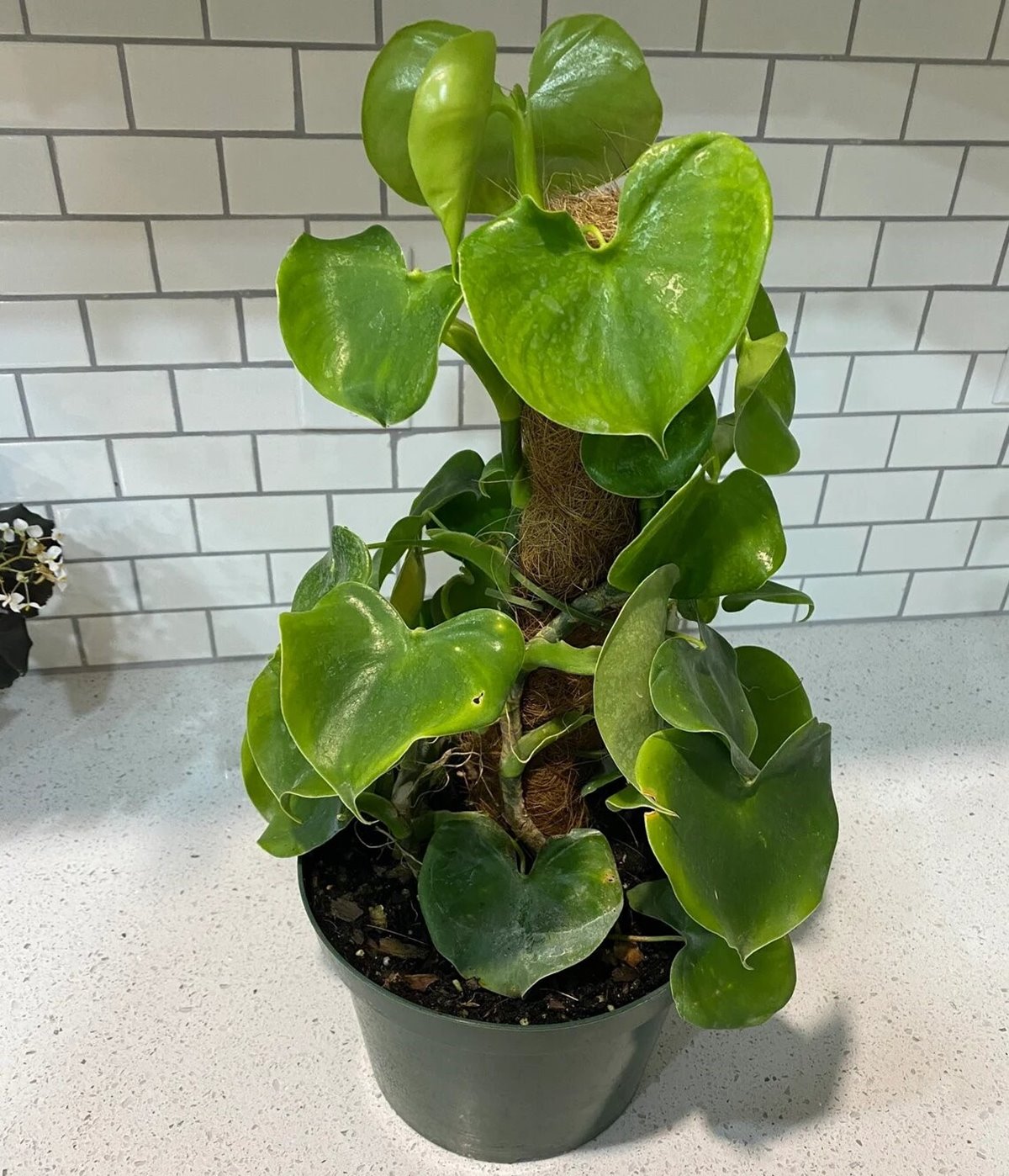

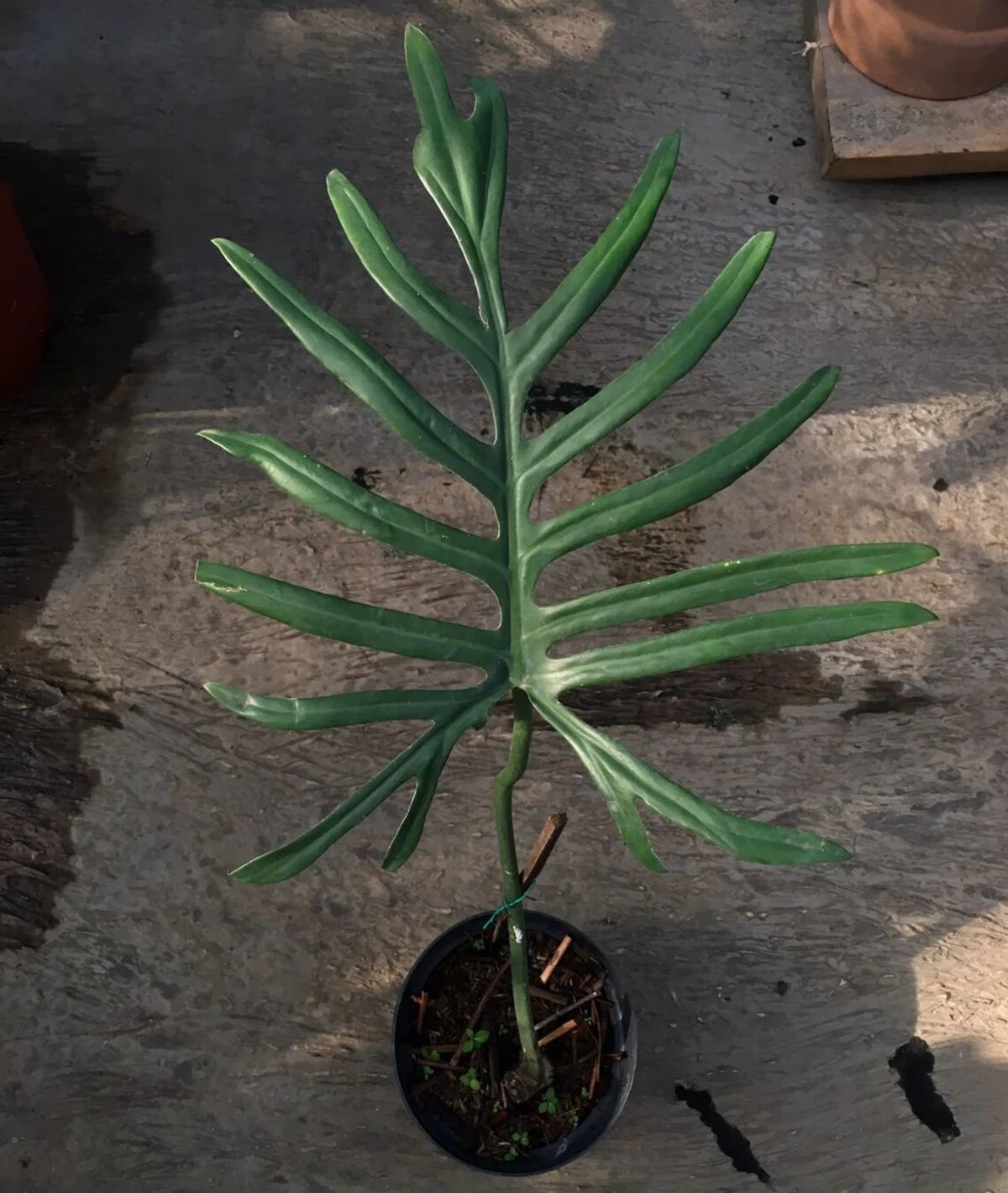
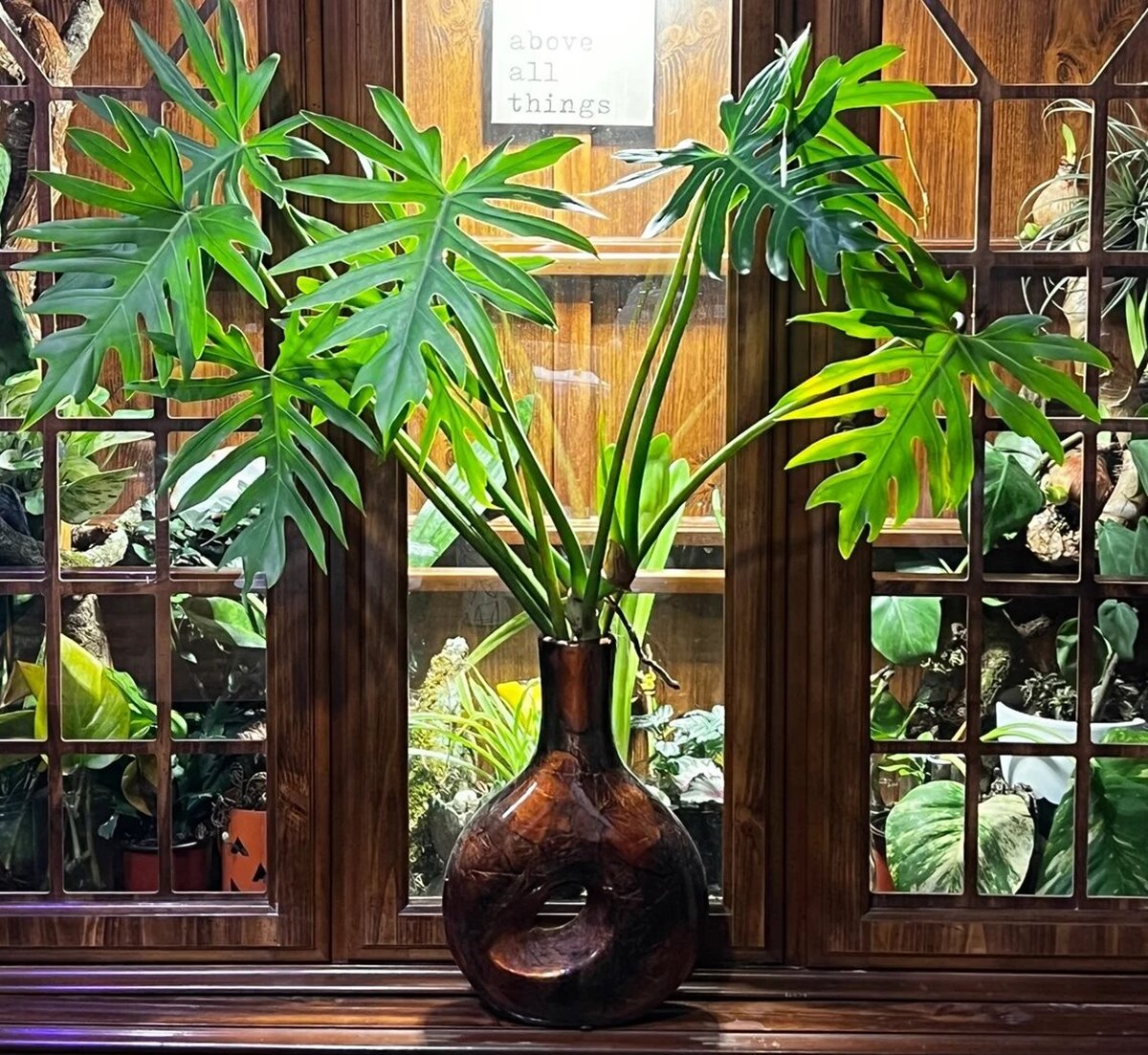
Plantipus
Philodendron Splendid young leaves are very similar to melanuchrysum, thanks for the article. very helpful